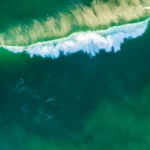In the early hours of June 5, 2021, astronauts aboard the International Space Station (ISS) welcomed some unusual visitors: 128 baby bobtail squids and 5,000 tardigrades. The micro-animals were part of SpaceX’s 22nd cargo resupply mission that delivered over 7,300 pounds of equipment and supplies — including treats like fresh apples and oranges — to the station. NASA researchers hope that the tiny critters will enable them to better understand the impacts of space travel on the human body.
Bobtail squids
The newly-hatched bobtail squids will allow scientists to study the impact of microgravity on the beneficial bacteria that help maintain our digestive and immune systems. The tiny creatures are ideal for the job due to their ability to glow in the dark when exposed to the Vibrio fischeri bacterium. The squids are not born with the microbes but, rather, acquire them from the ocean waters.
Therefore, the ISS astronauts will first add the bioluminescent bacteria to the squids. They will then carefully observe the molecule changes that enable the squids to light up in space. The squid tissue will subsequently be frozen to preserve the molecular timeline of which genes turned off and on, and returned to Earth. This will enable researchers to investigate if, and how, spaceflight alters the symbiotic relationship between the cephalopods and the microbes.
“Animals, including humans, rely on our microbes to maintain a healthy digestive and immune system,” Jamie Foster, a microbiologist at the University of Florida and principal investigator of the Understanding of Microgravity on Animal-Microbe Interactions (UMAMI) experiment, said in a statement. “We do not fully understand how spaceflight alters these beneficial interactions.”
Tardigrades
The eight-legged tardigrades, or water bears, have inhabited Earth for over 500 million years and are virtually indestructible. The barrel-shaped creatures can withstand boiling and freezing temperatures, extreme radiation, high pressure, and even survive in a total vacuum. NASA scientists hope that insight into the genes that allow the tiny animals to survive in a high-stress environment like space will help them better protect humans embarking on long-duration space missions.
“Spaceflight can be a really challenging environment for organisms, including humans, who have evolved to the conditions on Earth,” says Thomas Boothby, principal investigator and assistant professor of molecular biology at the University of Wyoming. “One of the things we are really keen to do is understand how tardigrades are surviving and reproducing in these environments and whether we can learn anything about the tricks that they are using and adapt them to safeguard astronauts.”
The astronauts are also testing new, compact solar panels for the ISS, investigating if robotic arms can be operated remotely using virtual reality, and experimenting with ways to develop resilient cotton plants.










